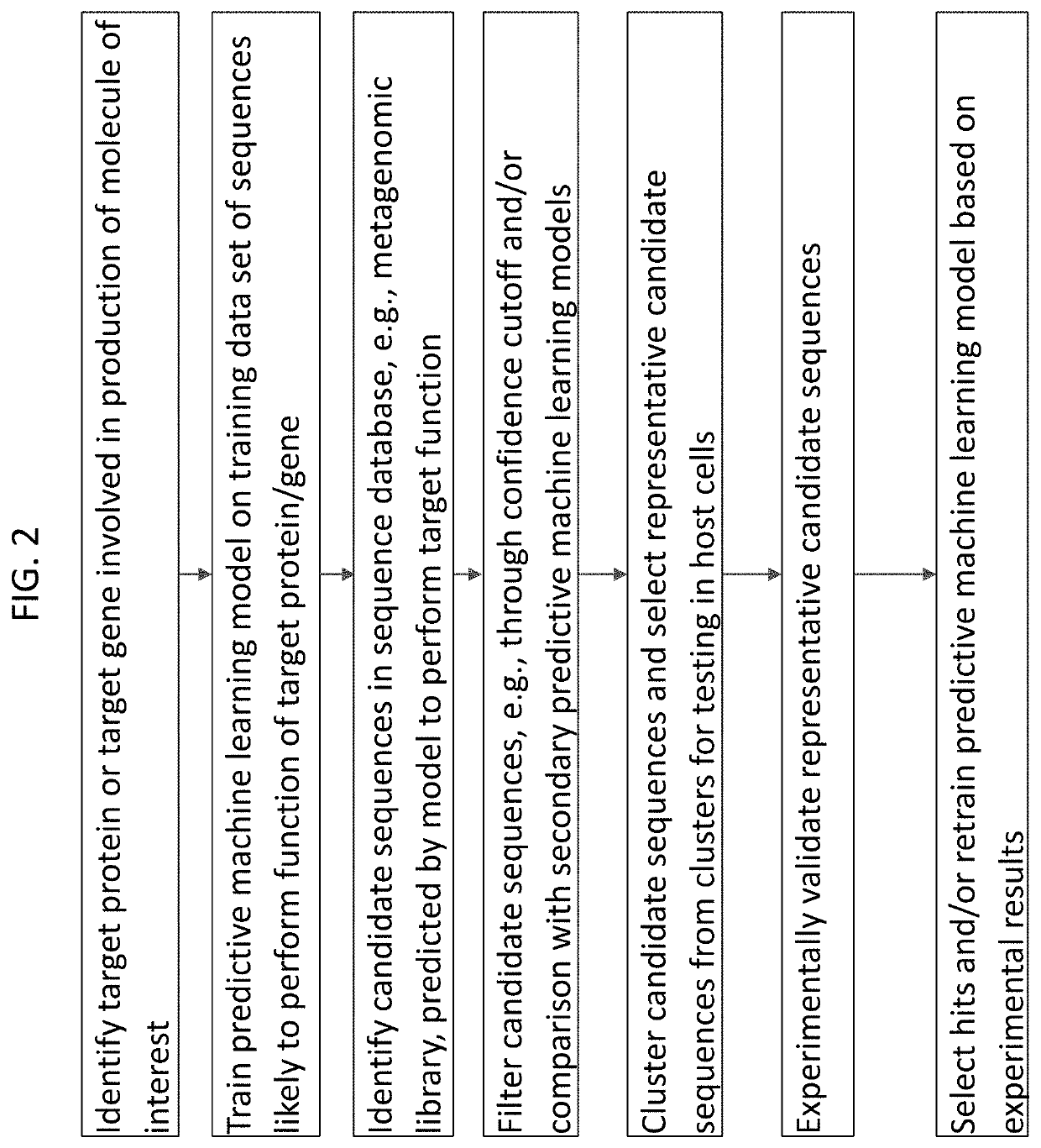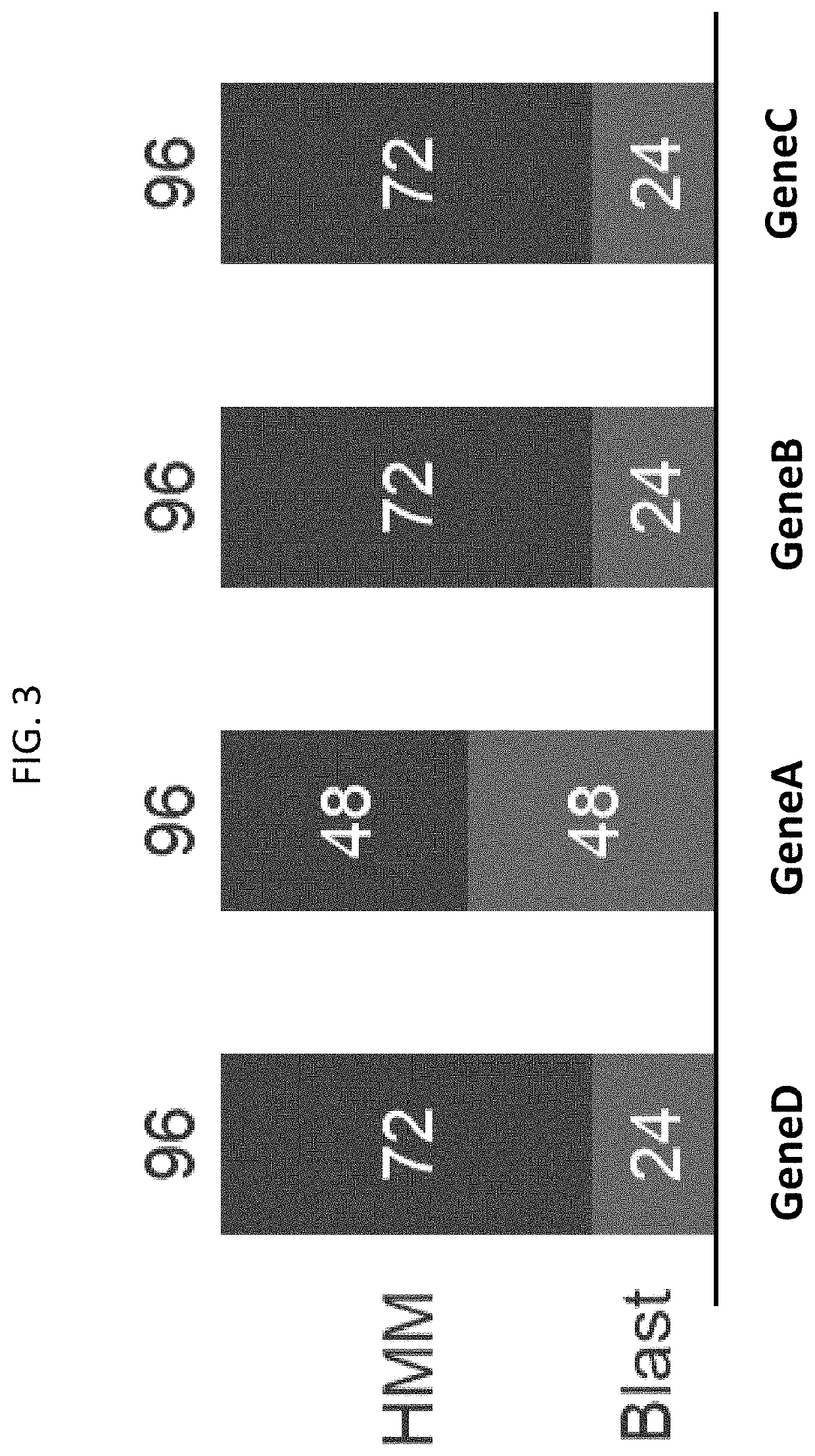Methods and systems for the optimization of a biosynthetic pathway
a biosynthetic pathway and optimization technology, applied in the field of genetic engineering improvement methods, can solve the problems of difficult scaling, limited identification of improved and/or alternative protein variants, and error-prone process, and achieve the effects of improving phenotypic performance, improving phenotypic performance, and increasing tolerance to stress factors
- Summary
- Abstract
- Description
- Claims
- Application Information
AI Technical Summary
Benefits of technology
Problems solved by technology
Method used
Image
Examples
example 1
ation of Genetically Dissimilar Protein Variants for Improved Host Strain Phenotypic Performance
[0531]This example employs the machine learning methods and systems of the present disclosure to identify a gene capable of enabling the desired function of production of a target molecule of interest, (“MOI”) The process followed by this example is illustrated in FIG. 1, which is a specific implementation of the general method depicted in FIG. 2. Four proteins performing functions of interest were identified as potential metabolic bottlenecks, i.e. limiting, for faster and / or more complete conversion of carbon source feed (e.g., media) into the MOI. The possibility of “debottlenecking” was explored by identifying and testing other heterologous, i.e. non-native, versions of one of the four proteins according to an exemplary method as disclosed herein. Three of the four proteins carried out an enzymatic function (geneA, geneB and geneC) and one had a transport function (geneD).
Variant Iden...
example 2
e Present Methods in Alternative Metagenomic Libraries
[0545]Test predictive models in additional metagenomic libraries—Predictive models of the present disclosure are validated in more than one library to test species within the metagenomic library genus. In another assay, common structural features of metagenomic libraries are identified that give rise to the functional utility of the HMM tool / metagenomic libraries methods of the invention.
[0546]Results demonstrate that the HMM tool can identify distant orthologs and / or functionally improved variants of target proteins / genes in different metagenomic libraries. Any identified common features of tested metagenomic libraries are used to establish relationships between structure and function of the databases (e.g., read length, diversity in pool of candidate genes).
example 3
n of Metagenomics Database and Publicly Available Sequence Database
[0547]Results from the disclosed predictive machine learning models run on a metagenomics database and a public database are quantitatively compared. In addition to showing that the predictive machine learning tools herein can identify distantly related and / or functionally improved orthologs of target proteins / genes, comparisons are generated to show that the results from a metagenomic database are superior to those of a public non-metagenomics database.
[0548]Exemplary metagenomic databases are shown to produce greater number of validated candidates (i.e., less false positives), the most sequence diversity among results, and / or lower sequence identity while maintaining functionality.
PUM
 Login to View More
Login to View More Abstract
Description
Claims
Application Information
 Login to View More
Login to View More - R&D
- Intellectual Property
- Life Sciences
- Materials
- Tech Scout
- Unparalleled Data Quality
- Higher Quality Content
- 60% Fewer Hallucinations
Browse by: Latest US Patents, China's latest patents, Technical Efficacy Thesaurus, Application Domain, Technology Topic, Popular Technical Reports.
© 2025 PatSnap. All rights reserved.Legal|Privacy policy|Modern Slavery Act Transparency Statement|Sitemap|About US| Contact US: help@patsnap.com



